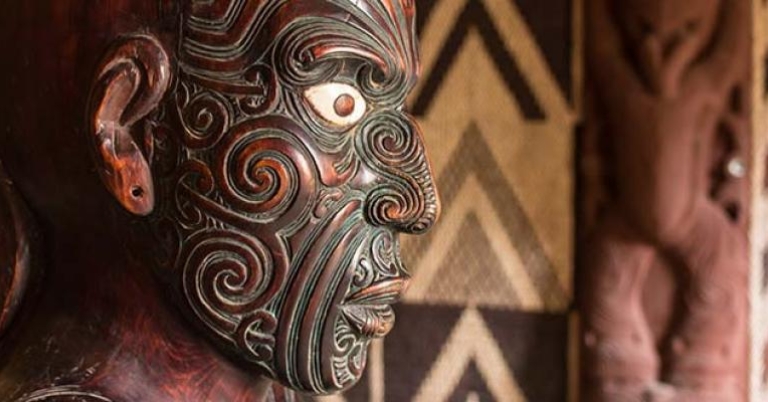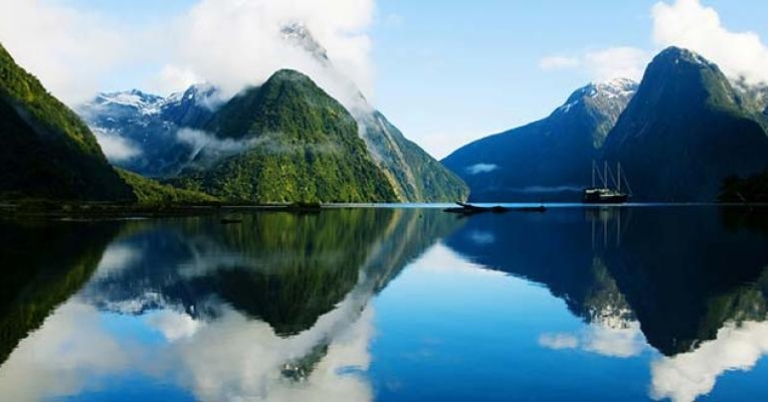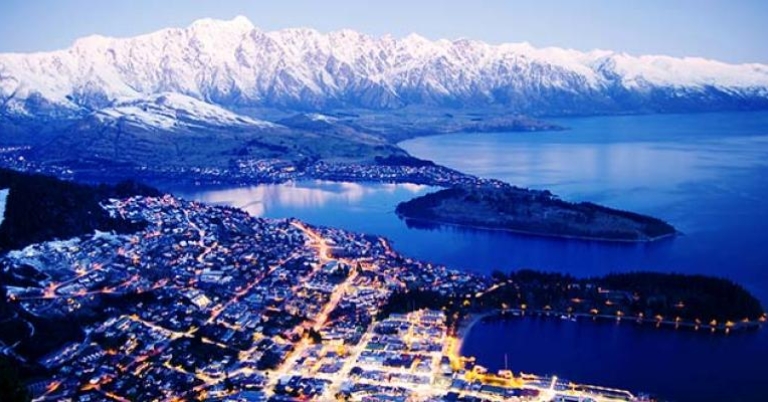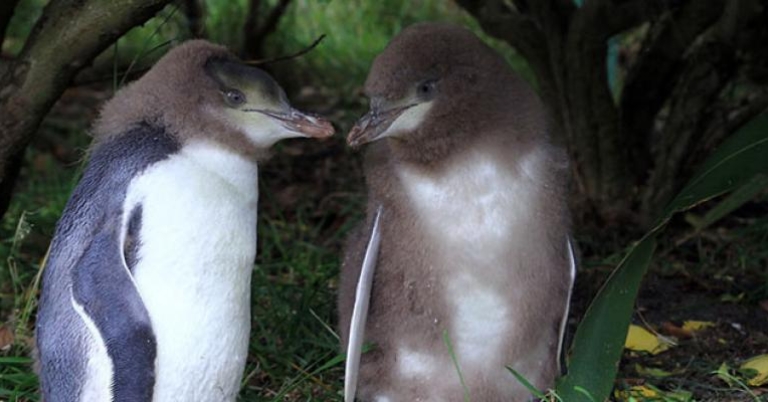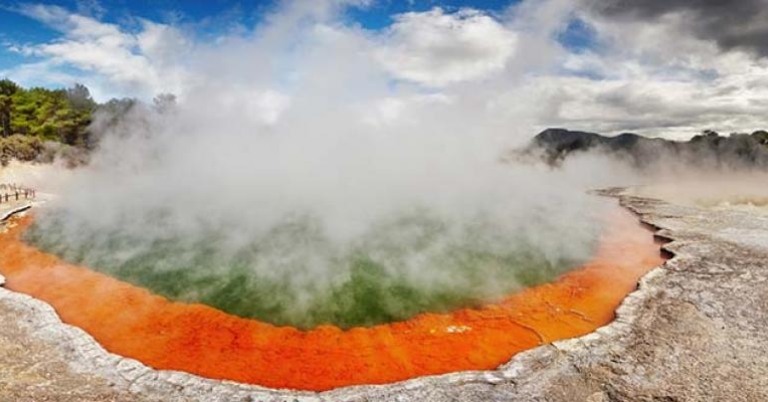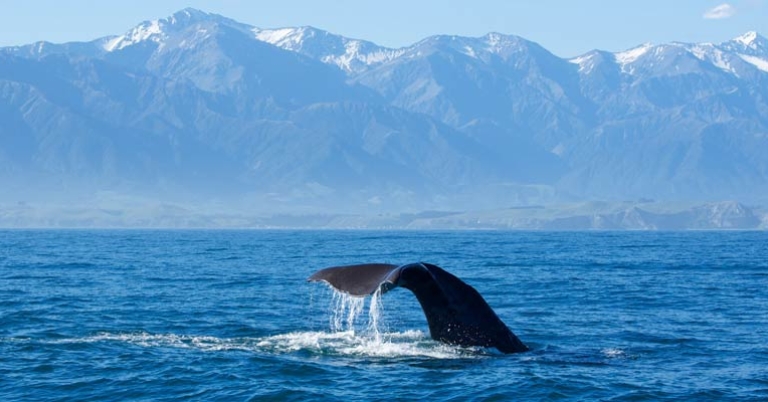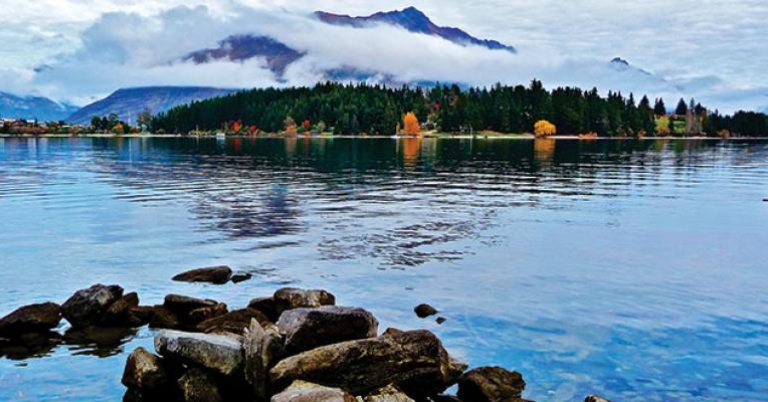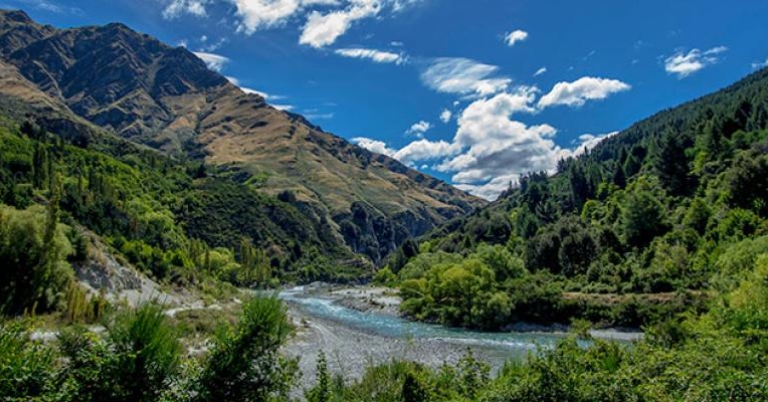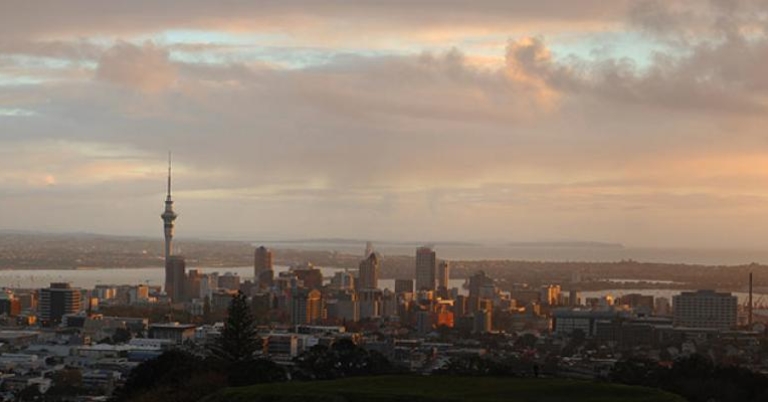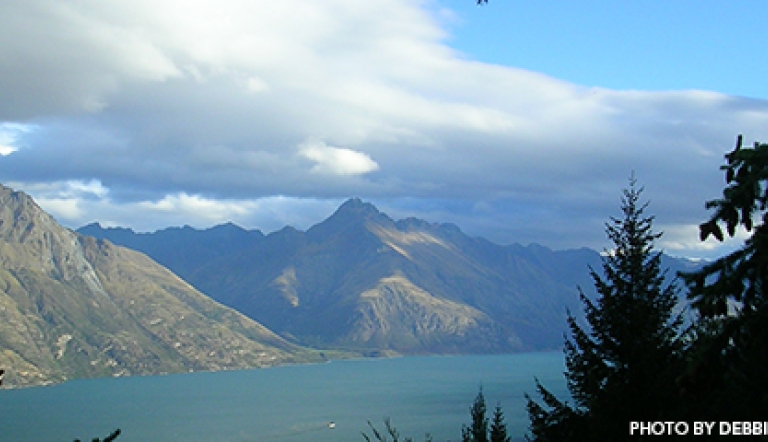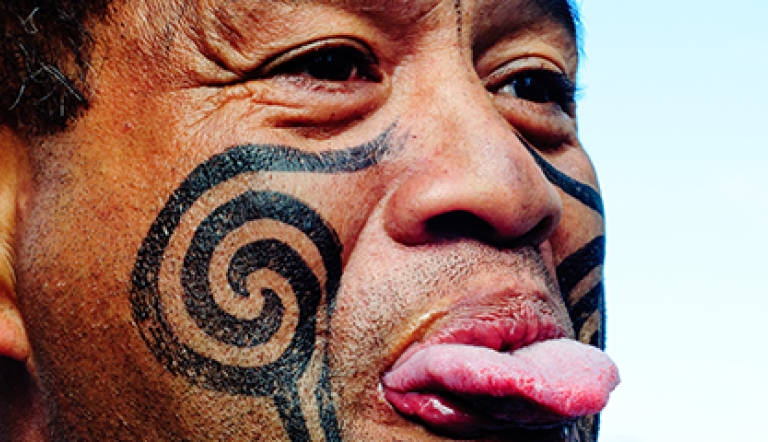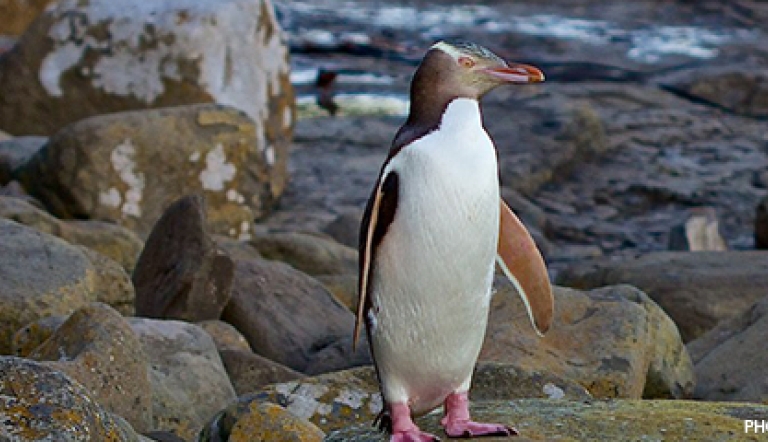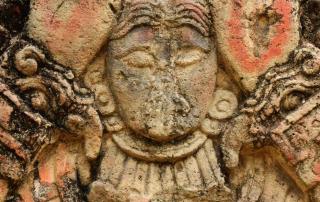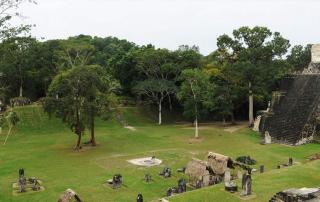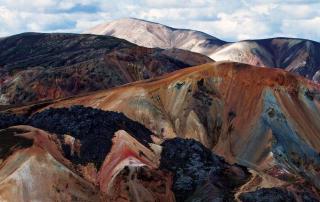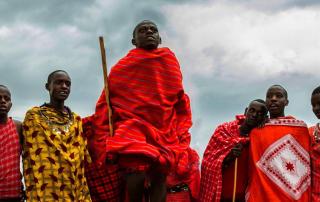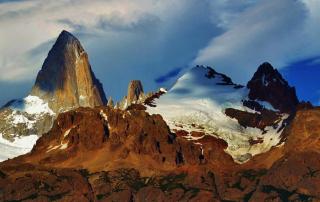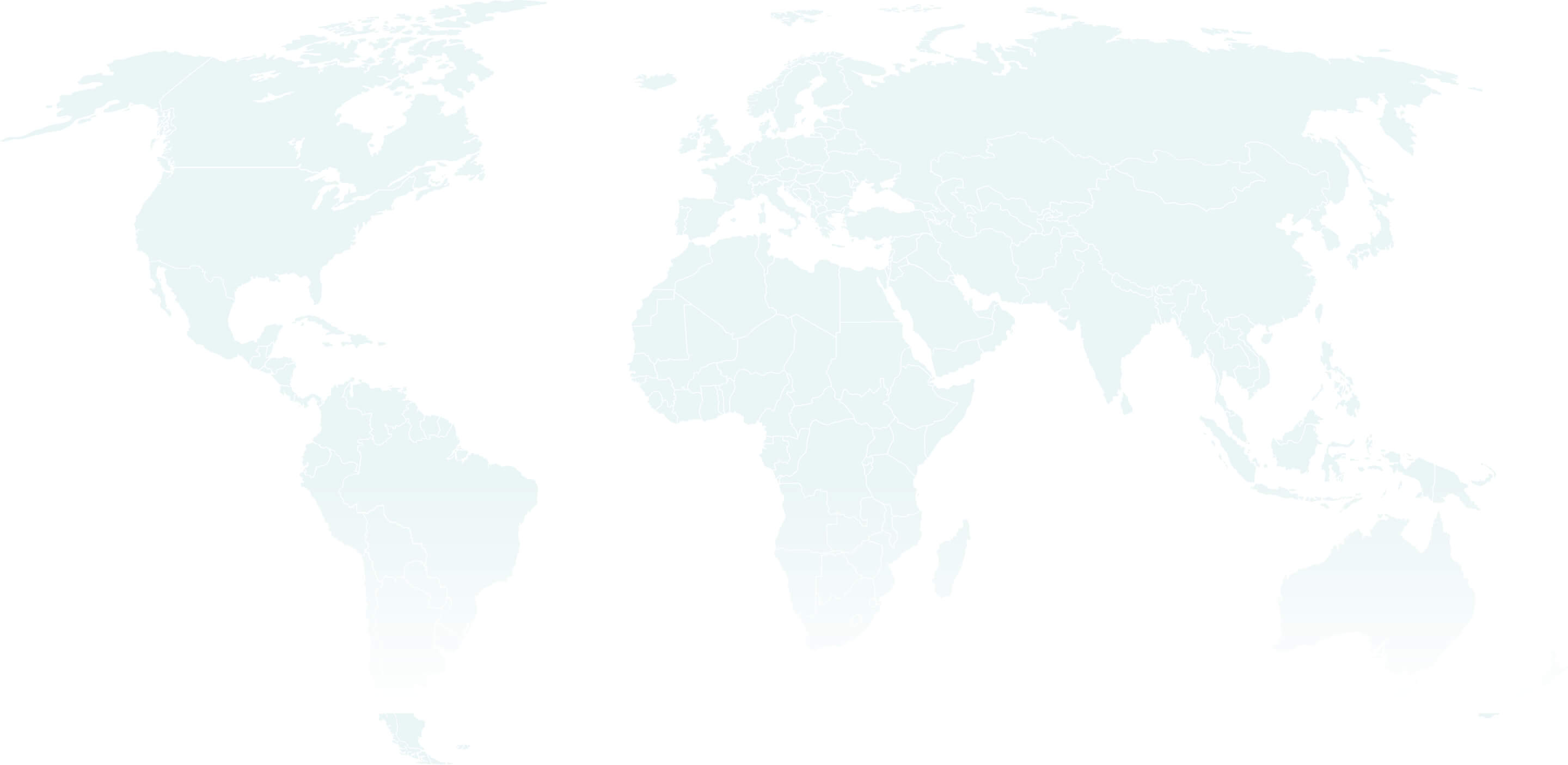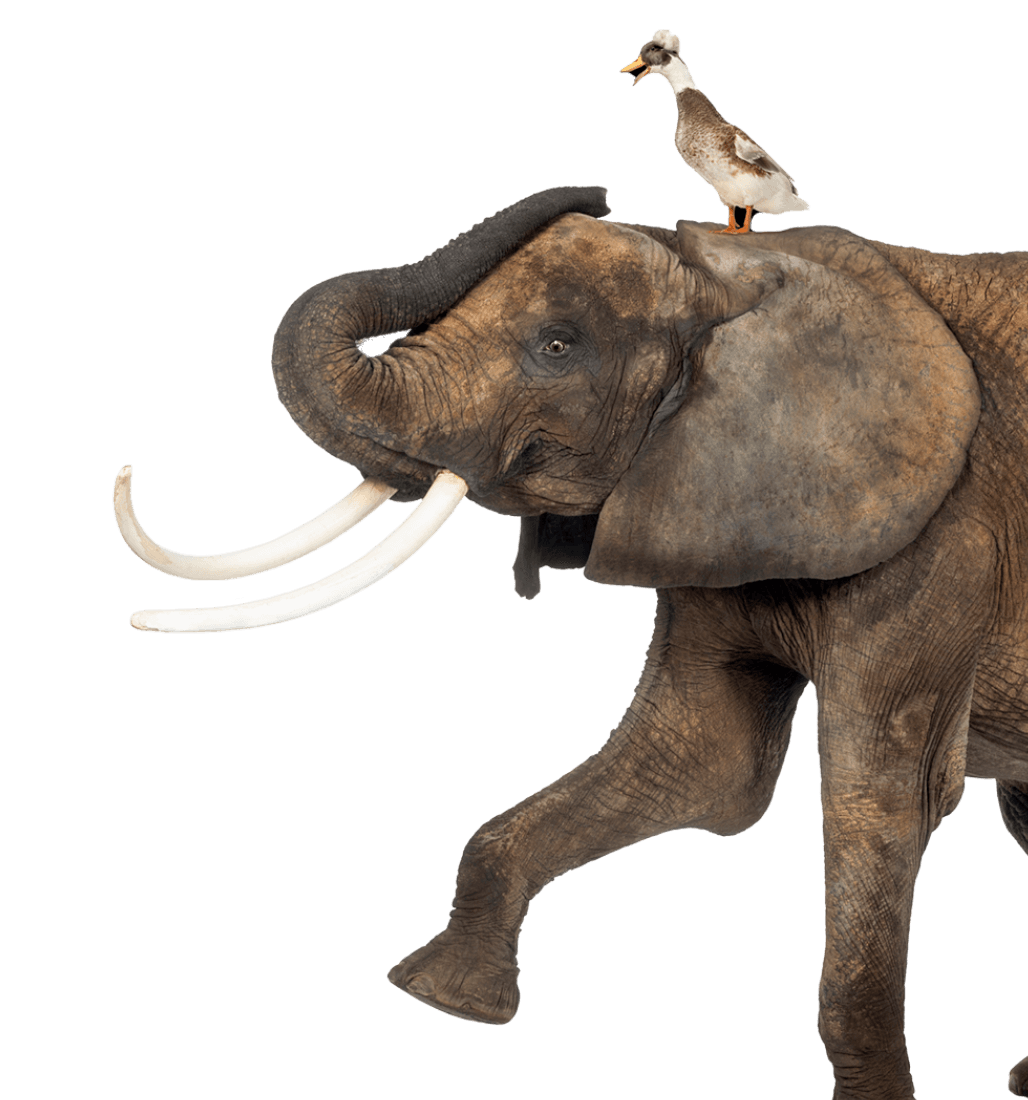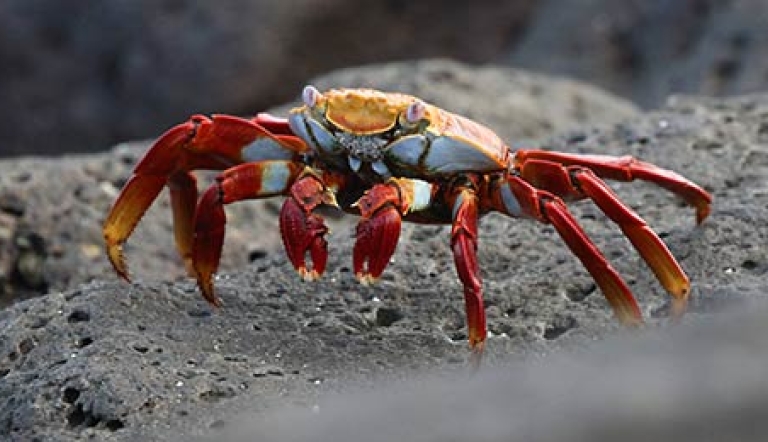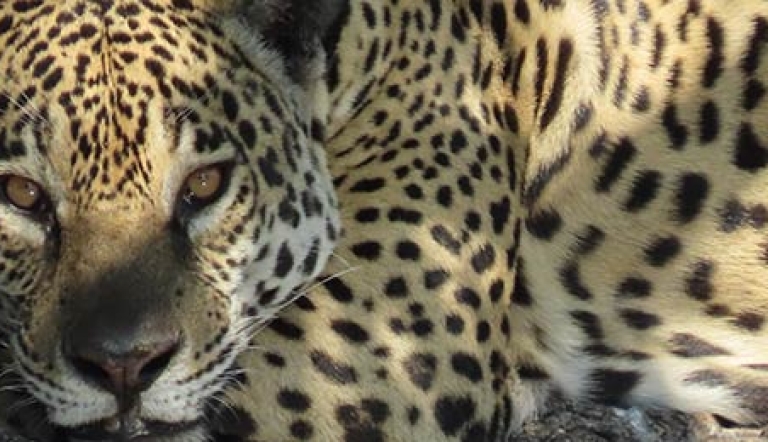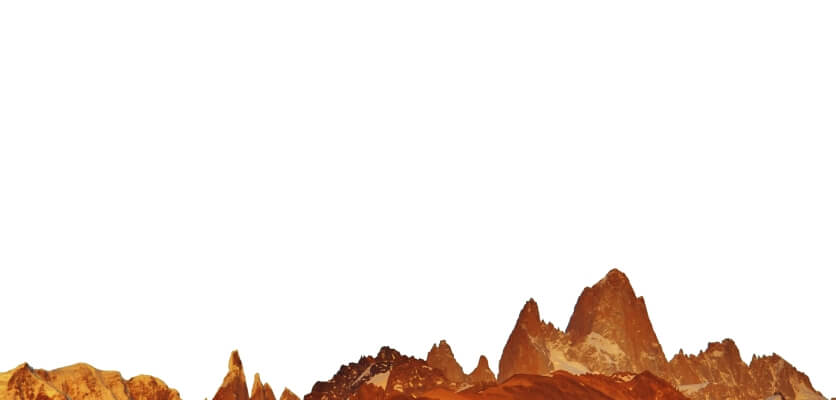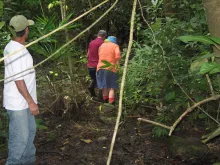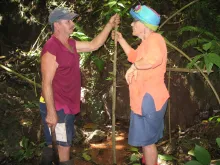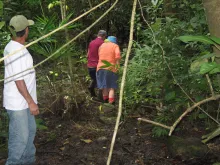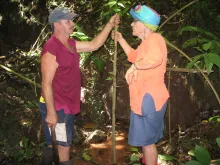With a mild climate year-round and almost 75 percent of its surface area formed by mountains and hills, New Zealand provides the ideal setting for adventure travel through hiking, cycling, and other avenues of outdoor exploration.
Along with its unparalleled natural beauty, New Zealand’s volcanoes, geysers, mud pools, boiling rivers, and lakes make it a goldmine for geological study. Due to its remote location, New Zealand remained unsettled by humans for many years, which allowed it to develop a distinct biodiversity of animal, fungal, and plant life. As a result, 82 percent of New Zealand’s ferns, trees and flowers are endemic, including the bright yellow Kōwhai tree and the red Pohutukawa tree, making New Zealand one of the world’s top destinations for horticulture. Like its plants, the bird species found in New Zealand are also very unique. Before the arrival of humans and predatory animals, flightless birds, such as the Kiwi, Kākāpō, and Takahē, dominated the forests. Due to large changes in habitat and the arrival of humans, today many of these animals have become extinct or endangered. However, conservationists have made remarkable efforts to help protect threatened wildlife by creating island sanctuaries that are open to the public. Isolated from the rest of the world by hundreds of miles of sea, New Zealand is the perfect getaway for travelers looking to spend some one-on-one time with nature. Holbrook’s programs offer explorers a chance to study the intriguing native Māori culture, explore incredible biological riches, and adventure against the stunningly gorgeous backdrop of a fascinating, diverse land. Our expertise combined with New Zealand’s unique environment creates the perfect recipe for an unforgettable, enriching trip.
Environments
New Zealand's separation from the supercontinent Gondwana about 85 million years ago allowed many ancient plants and animals to survive and evolve in isolation. Complementing the unique flora and fauna is a landscape that contains an unrivalled variety of landforms. In a couple of days’ drive, it is possible to see mountain ranges, sandy beaches, lush rainforests, glaciers and fjords, and active volcanoes.
The natural beauty of New Zealand’s landscapes range from Lake Pukaki and Lake Tekapo to Mackenzie Country, Mount Cook, and Tasman Glacier. At Whirinaki Forest, you can view the unique podocarp forest, a mixture of tall podocarps and smaller trees (hardwoods) with an understory of shrubs, plants and ferns. The forest is dominated by towering examples, such as kahikatea, totara and matai. At Rangitoto Island you can hike the lava fields of a shield volcano for a taste of New Zealand’s fascinating geology, and explore the rugged lava crops and native bush to learn about the history and geology of the island. At Te Puia Geothermal Valley, the hot rocks located close to the surface heat the ground water, which boils to the surface as hot springs and bursts out of the ground. In the Nile River canyon, you can explore the enormous cave system, ancient stalactites and stalagmites, and galaxies of glowworms. Continue with a visit to Punakaiki blowholes, stratified limestone formations that look like petrified pancakes, or hike through a valley to the face of Franz Josef Glacier to witness the telltale signs of the rocks and sediments carried down the valley by previous advances of the glacier.
Conservation
New Zealand has lost many native species since humans first arrived 1,000 years ago. Nonetheless, recent efforts have been made to protect and preserve the country’s natural resources. These initiatives include removing introduced pests from island wildlife sanctuaries, the establishment of 13 national parks, three maritime parks, two world heritage areas, hundreds of nature reserves, and ecological areas, a network of marine reserves and wetlands, and protection for special rivers and lakes. In total, around 30 percent of New Zealand's land area is protected conservation land. One example is Tiritiri Matangi Island, a wildlife sanctuary and one of New Zealand’s most important and exciting conservation projects. Over the course of 120 years of farming, this island was stripped of 94 percent of its native bush. However, from 1984 to 1994, volunteers planted between 250,000 and 300,000 trees. It is now 60 percent forested, with the rest left as grassland to help birds such as the Takahe survive.
Birds
New Zealand is known for its unusual birds. The most widely recognized of these is the flightless kiwi, New Zealand's unofficial national symbol. Also flightless are the Weka and the endangered Kakapo, the world's largest parrot, which can just scramble up into shrubs and small trees. Another unique bird, one capable of flight, is the inquisitive Kea, a parrot renowned for its fearlessness of humans and mischievous personality. Look for other native birds too, like the Takahe, Kaka, Saddleback, and Bellbird, plus learn about Yellow-eyed Penguins at Penguin Place and tour the Royal Albatross Centre in Dunedin.
Culture
The Maori were New Zealand's first settlers, believed to have arrived from Polynesia in the 13th century. According to legend, the great explorer Kupe discovered New Zealand and named it Aotearoa, “Land of the Long White Cloud.” Today, people of Maori heritage make up approximately 15 percent of the country’s population. Visitors can experience the culture of the Maori people during a visit to the village of Tamaki to enjoy a traditional Hangi feast, learn some of the games and crafts of pre-European Maori, and interact with local Maori to learn a little more about the effects of colonization on the local population. Attend a Maori cultural performance, or visit the workshop of a Maori carver. With a trip to Pa Harakeke (Home of Flax), you can learn about the importance of flax to both the Maori and to early European settlers.
Entry & Exit Requirements
U.S. and Canadian citizens must have a valid passport to enter New Zealand. Passports must be valid for at least three months after the date of entry.
To enter New Zealand, U.S. citizens are required to obtain an Electronic Travel Authorization (NZeTA) prior to departure. Requesting an NZeTA costs NZD $9 through the free mobile app or NZD $12 if applying through the website. Allow up to 72 hours for processing, although it could take as little as 10 minutes. To apply, you will need your passport, a credit card or debit card (Visa or MasterCard), and an email address. Visit https://nzeta.immigration.govt.nz for more information.
Travelers must also pay the IVL, a levy that funds tourism infrastructure and helps protect the natural environment. The IVL costs NZD $35 and is paid at the same time you request your NZeTA.
If you are not traveling with a U.S. passport, please check with the New Zealand Embassy for the requirements based on your nationality.
Health Information
IMMUNIZATIONS
The Centers for Disease Control recommends that all travelers be up to date on routine vaccinations such as measles-mumps-rubella (MMR) vaccine, diphtheria-pertussis-tetanus vaccine, varicella (chicken pox) vaccine, and your yearly flu shot before every trip.
There are no vaccinations required for entry into New Zealand.
Some physicians recommend that travelers get hepatitis A and hepatitis B vaccines before visiting New Zealand.
Please consult your physician for additional information and recommendations based on your individual circumstances.
SAND FLIES
In wetter areas, particularly in Fiordland, sand flies can be pests, but are effectively controlled by use of an insect repellent.
GIARDIA
Giardia is a water-borne parasite that causes diarrhea. To avoid contracting it, it is best not to drink water from lakes, ponds or rivers without first boiling, chemically treating or filtering it.
SUN EXPOSURE
New Zealand's clear, unpolluted atmosphere and relatively low latitudes produce sunlight stronger than much of Europe or North America. The effects of the sun can be damaging to the eyes and skin. Spending time outdoors exposes you to the sun’s harmful ultraviolet (UV) rays, even on cloudy days. To protect yourself from the sun, use a broad spectrum sunscreen of at least SPF 15, protect skin with clothing, wear a wide-brimmed hat and sunglasses, and drink plenty of fluids.
Currency
The currency of New Zealand is the New Zealand Dollar.
Electricity
The electrical current in New Zealand is usually 230/240V 50Hz AC. Travelers from the United States will need to use a converter.
Time Zone
The time zone in New Zealand is New Zealand Time Zone (UTC+12:00).
New Zealand observes Daylight Saving Time.
Departures and arrivals on flight schedules are listed in the local time.
Communications
PHONES
New Zealand’s country code is +64.
To call New Zealand (from the U.S.): Dial 011-52-(xx-xxx-xxxx)
To call the United States: Dial 001-(xxx-xxx-xxxx)
Please check with your cell phone provider if you’re unsure whether or not your cell phone will work internationally. Be aware that you are likely to incur additional charges for international use.
INTERNET
If you’re looking to stay connected to the internet everywhere you go, it’s recommended that you purchase a plan from one of New Zealand’s main networks. Free WiFi hotspots are generally found in main cities only and can be sporadic throughout the rest of the country. Purchasing a plan from a network will allow you to have access to a mix of data, calling and texting throughout your trip.
Reading List
FIELD GUIDES
The Field Guide to the Birds of New Zealand
Barrie Heather & Hugh Robertson
The only field guide to New Zealand birds officially endorsed by the Ornithological Society of New Zealand. Includes 74 stunning color paintings of New Zealand birds, including rare and recently extinct species, illustrated by Derek Onley.
A Field Guide to the Birds of New Zealand
Julian Fitter
A comprehensive and compact guide by longtime resident Julian Fitter featuring 600 color photographs, range maps and species descriptions.
Birds of New Zealand, A Photographic Guide
Paul Scofield
Illustrated by almost 1,000 photographs, Birds of New Zealand offers a definitive introduction to the identification and behavior of the country's extraordinary avian life.
New Zealand Birds
James Kavanagh
A handy, laminated guide to over 140 species of birds commonly found in New Zealand, highlighting the country's top birding hot spots.
New Zealand Wildlife
James Kavanagh
A handy, laminated guide to 140 familiar species of bird, mammal, reptile, amphibian, fish and butterfly in New Zealand. Ideal for quick nature reference.
Whales, Dolphins and Porpoises
Mark Carwardine
In the trademark, graphic Eyewitness style, this sturdy guidebook colorfully describes the world's cetaceans with numerous illustrations, range maps, fluke drawings and a few paragraphs on each species.
MAPS
New Zealand Adventure Map
National Geographic Maps
A detailed map at a scale of 1:1,000,000, printed on handy tear- and water-resistant paper.
GUIDEBOOKS
Lonely Planet New Zealand
Jeff Williams, Christine Niven, & Peter Turner
This comprehensive guide provides an excellent overview of the North and South Islands, local customs, history, culture, flora, and fauna.
Eyewitness Guide New Zealand
Eyewitness Guides
This superb guide features color photography, dozens of excellent local maps and a region-by-region overview of attractions
A Personal Kiwi-Yankee Dictionary
Louis Leland
Take this book with you on your trip to help you untangle the sometimes perplexing and colorful local idioms.
Beginner's Maori
K. T. Harawira & T. R. Buxton
A guide to the Maori language, written for the traveler looking for an introductory foundation to the language, culture and traditions of the Maori people.
Rough Guide to New Zealand
Rough Guides
A comprehensive guide to New Zealand in the hip, literate and very infomative Rough Guide style. It's divided cleanly between practical information and illuminating background on culture and history.
Xenophobe's Guide to the Kiwis
Christine Cole Catley
This irreverent pocket guide to cultural awareness is both insightful and entertaining.
NATURAL HISTORY
Tutira, The Story of a New Zealand Sheep Station
Herbert Guthrie-Smith & William Cronon
First published in 1921, this loving account of the ecology of New Zealand focuses on Guthrie-Smith's 40,000-sheep shearing station on the shores of Lake Tutira in the Hawke's Bay region of the North Island.
HISTORY & CULTURE
1000 Years of Maori History
Michael King
A fascinating read about the history of the Maori people and their struggle to survive and overcome European influence.
Come on Shore and We Will Kill and Eat You All
Christina Thompson
Historian Thompson effortlessly alternates tales of mostly disastrous early encounters with the Maori and the story of the love of her life, Seven, the Maori she married, in this endearing memoir.
A Concise History of New Zealand
Philippa Mein Smith
This well-written pocket history covers the history and development of New Zealand from its beginnings to the 21st century.
A Traveller's History of New Zealand and the South Pacific Islands
John Chambers
A brisk portrait of New Zealand and its culture, economy and society, this concise history also covers the settlement of the Pacific Islands.
Maori
H.G. Robley
A new unabridged edition of the classic, illustrated sourcebook on Maori tattooing (moko), first published in 1896. The author pays scrupulous attention to the intricate patterns, design and cultural meaning of traditional Maori tattoos.
New Zealand Book of Beasts, Animals in Our Culture, History and Everyday Life
Annie Potts
This engaging scholarly work explores New Zealanders' relationship with native fauna, how New Zealanders have nurtured, glorified, cherished, demonized and devoured the nation's animals.
Pacific Journeys
Peter Hendrie
A striking portfolio of 330 color photographs of the people, nature and landscape of the region, Hendrie's gorgeous book includes images from his many journeys to Papua New Guinea and the Solomon Islands, to Tahiti and the Marquesas, Tonga, Fiji, Easter Island and Hawaii over the last 20 years.
Captain Cook, Master of the Seas
Frank McLynn
McLynn re-creates the remarkable voyages that took the famous navigator from his native England to the remote Pacific, showing him to be a brave and brilliant seaman, who transcended his humble beginnings as a deckhand and triumphed through good fortune, courage, and talent.
The Bone People
Keri Hulme
Set on the South Island, this powerful novel brings together three troubled individuals who represent Maori and European traditions in contemporary New Zealand.
Want to subscribe to the Holbrook Explorer?
The Plight of the Yellow-eyed Penguins in New Zealand
When most people think of penguins, they think of the cute, little birds in tuxedos that frolic i
